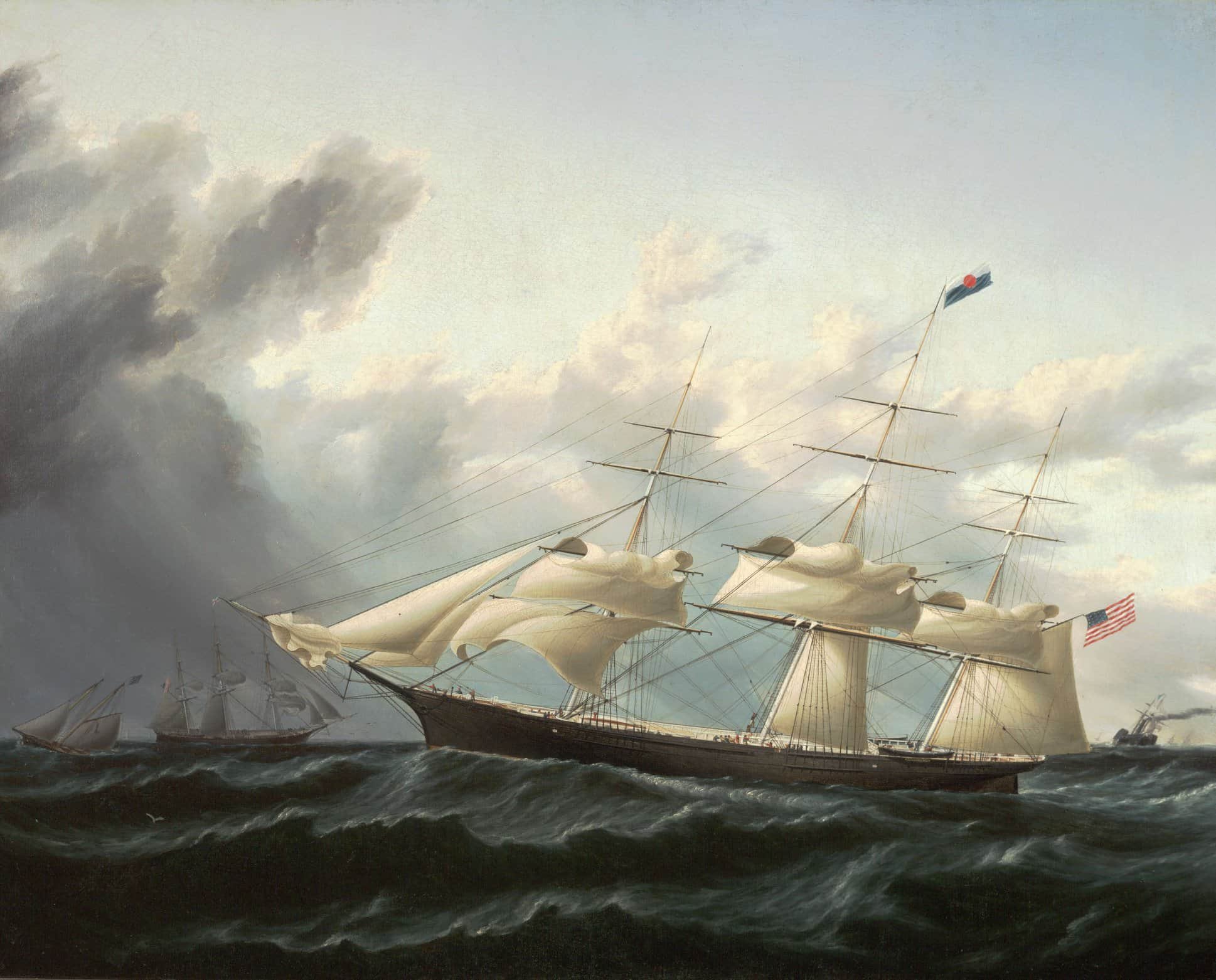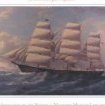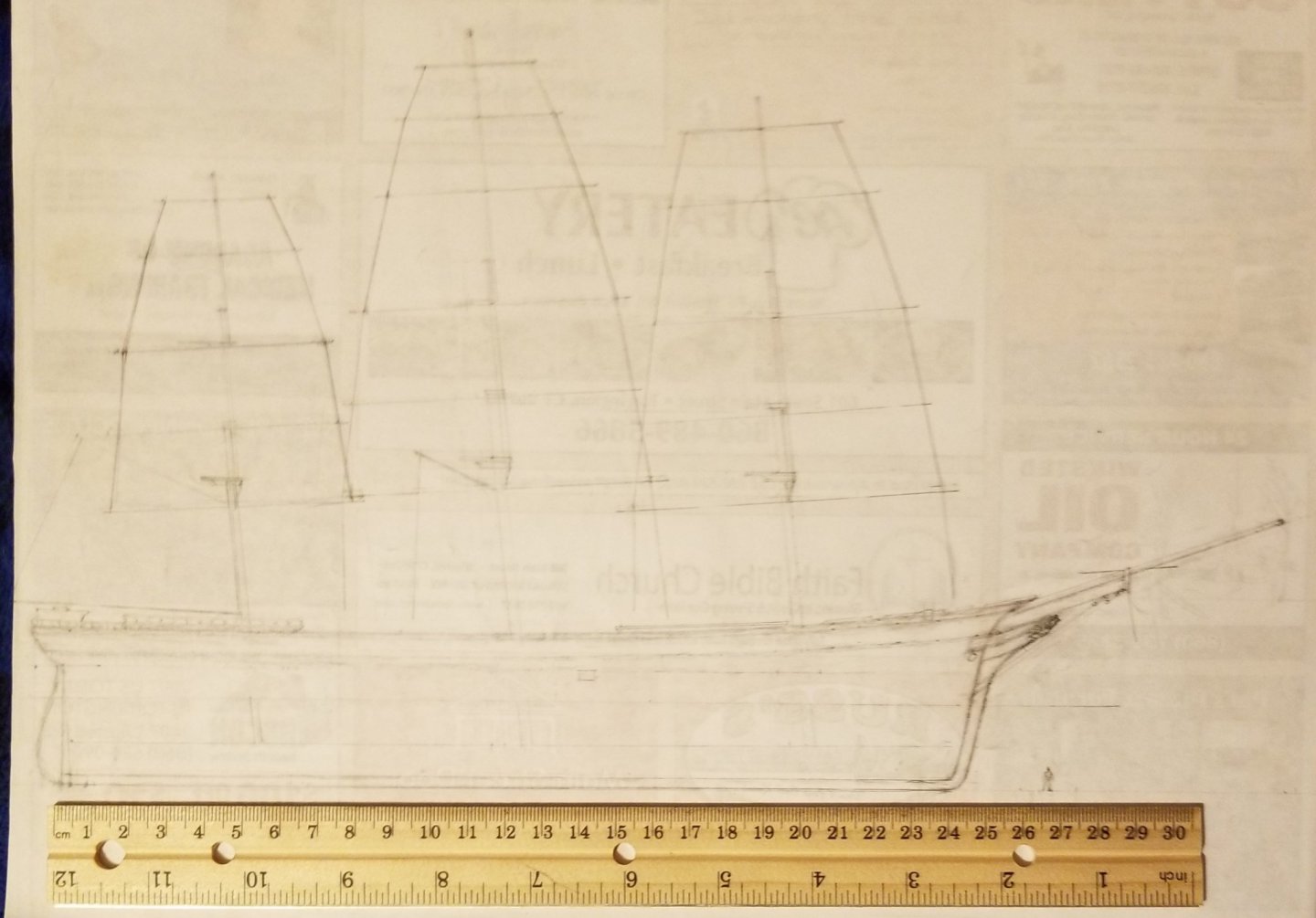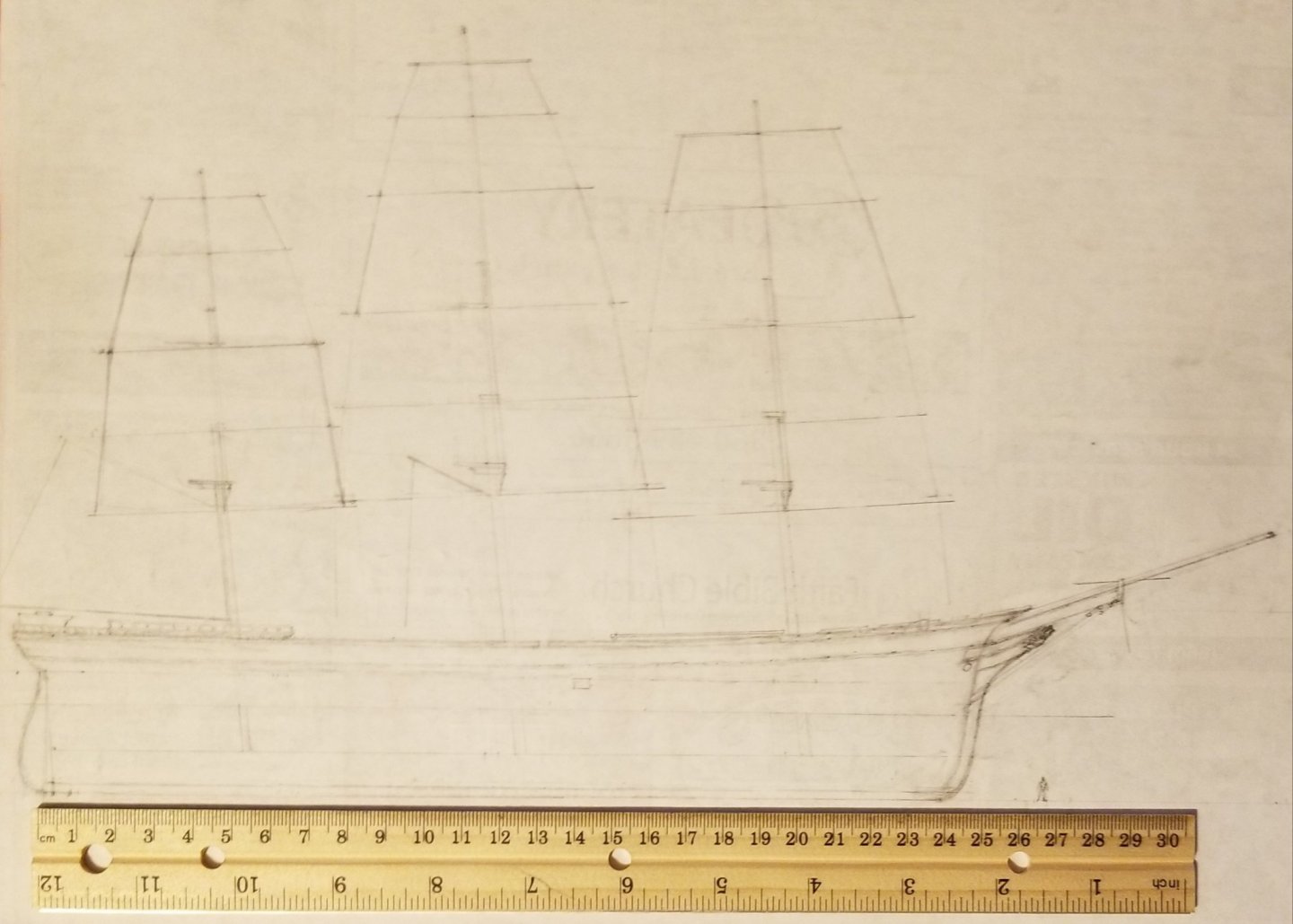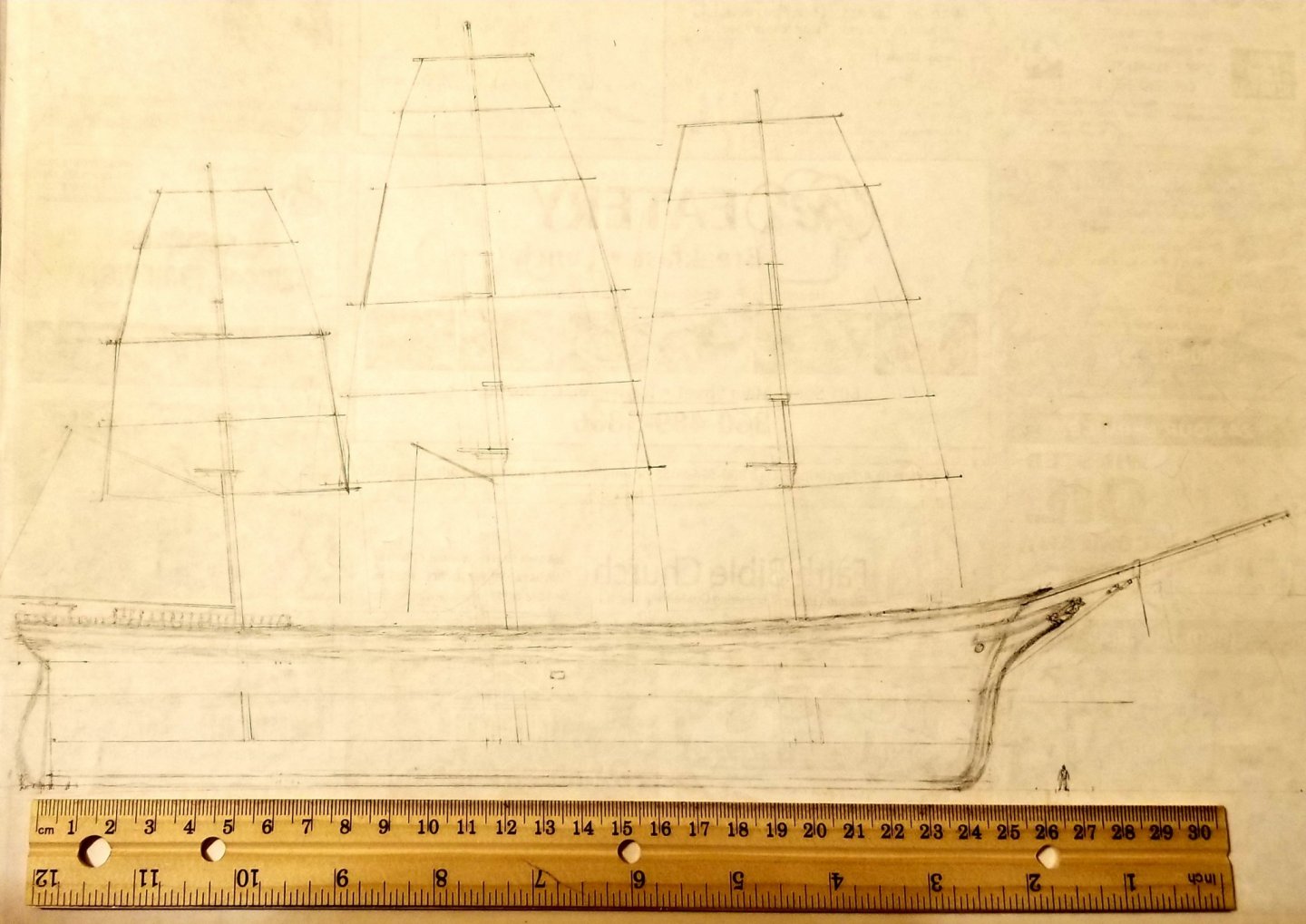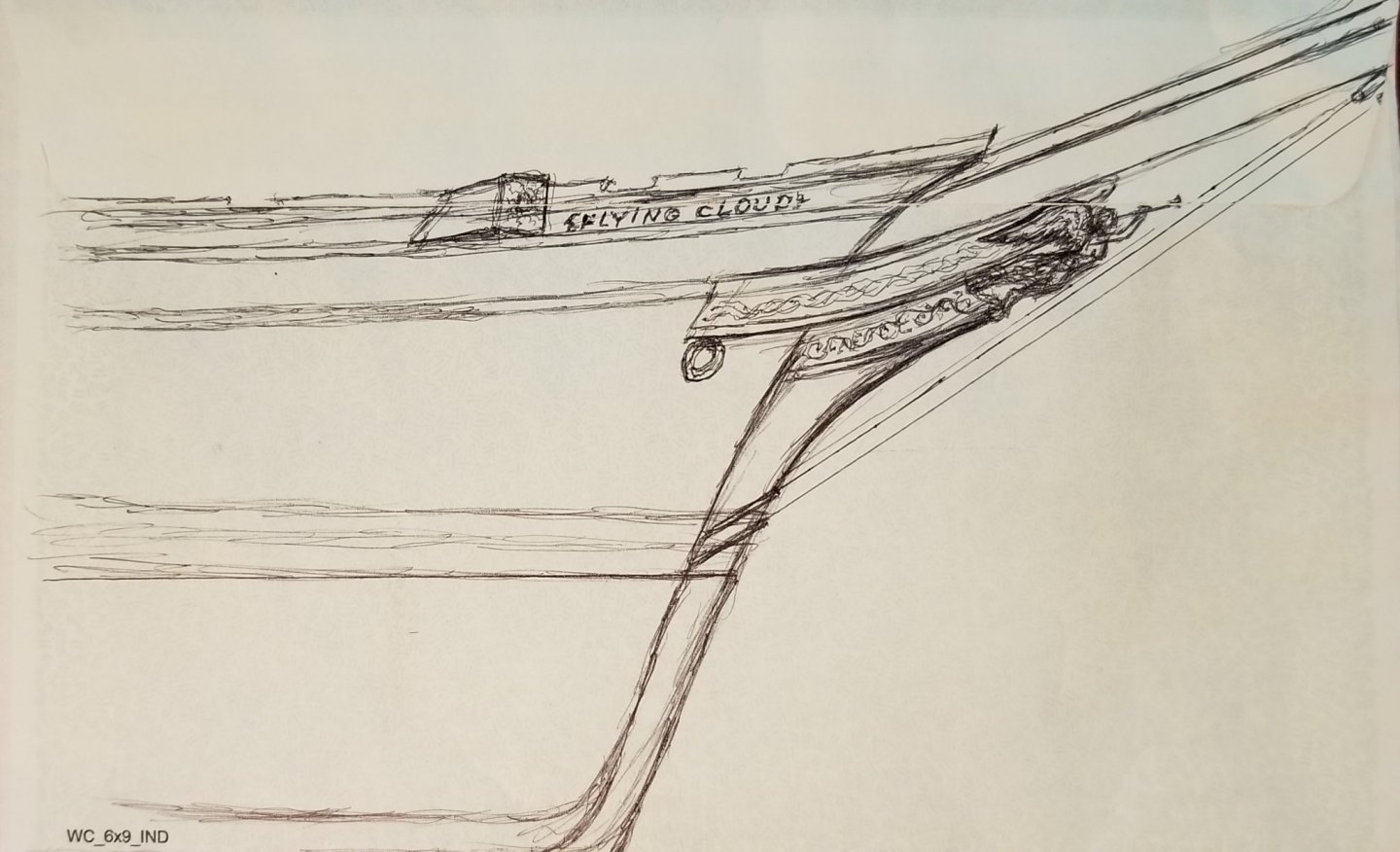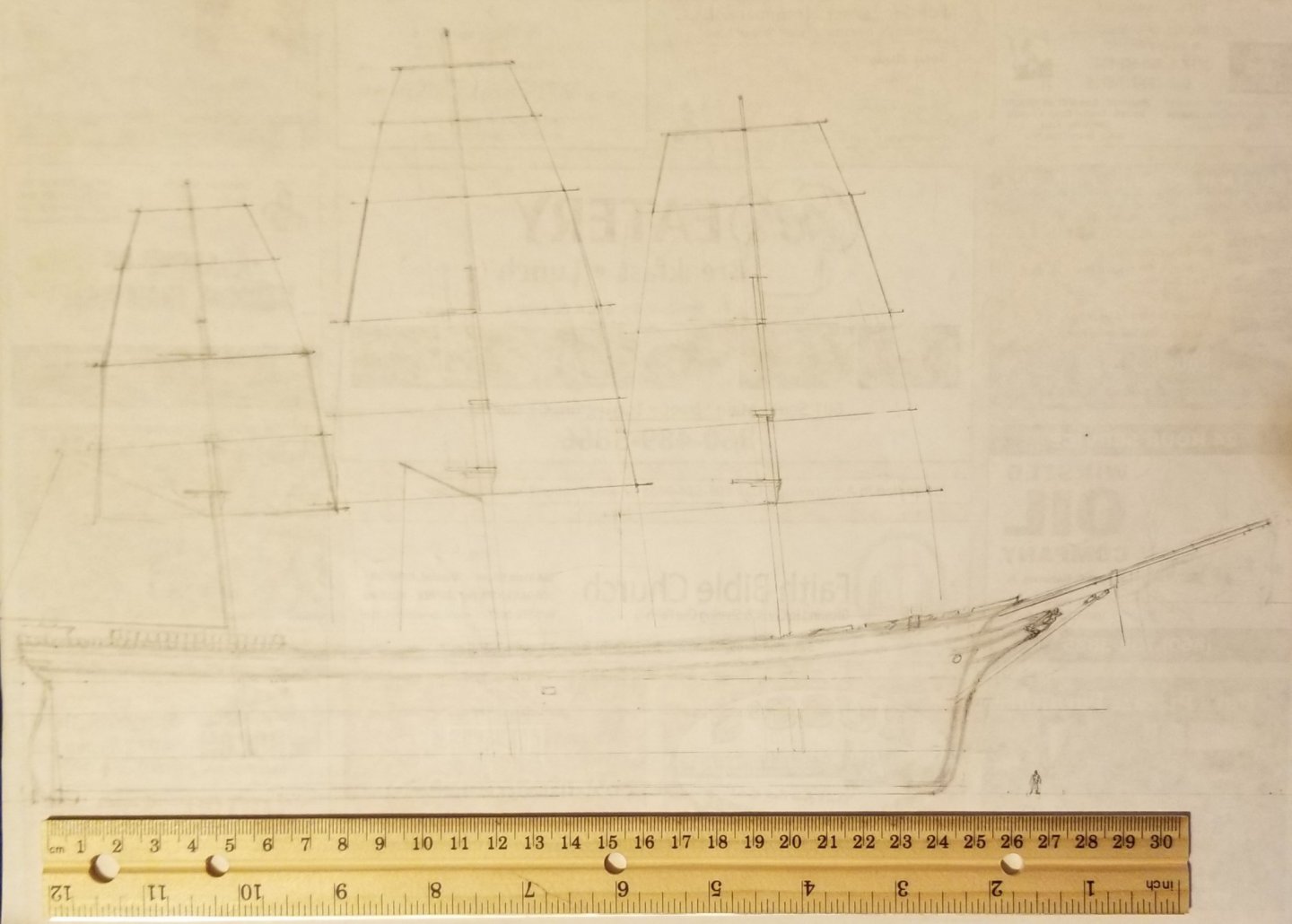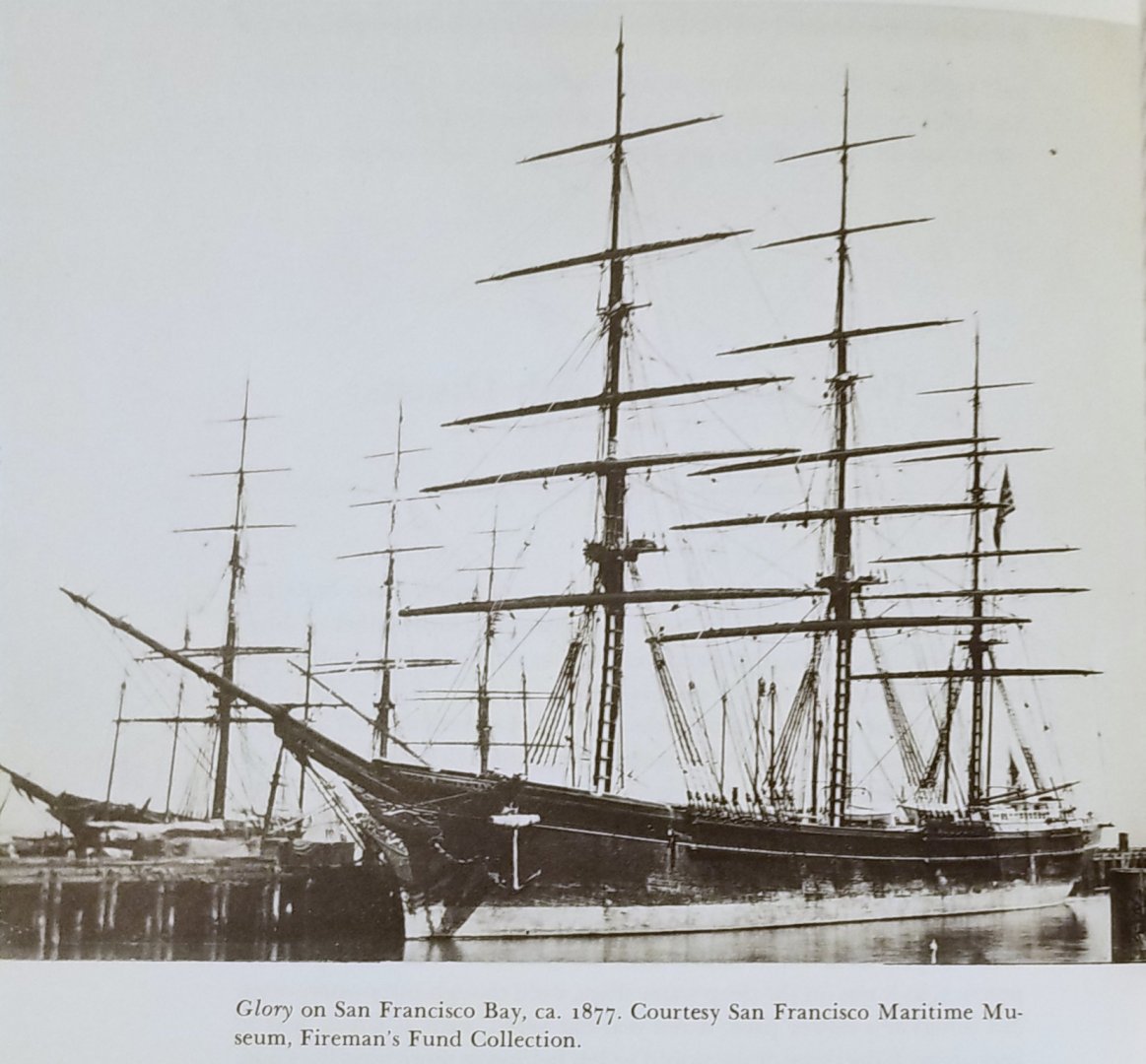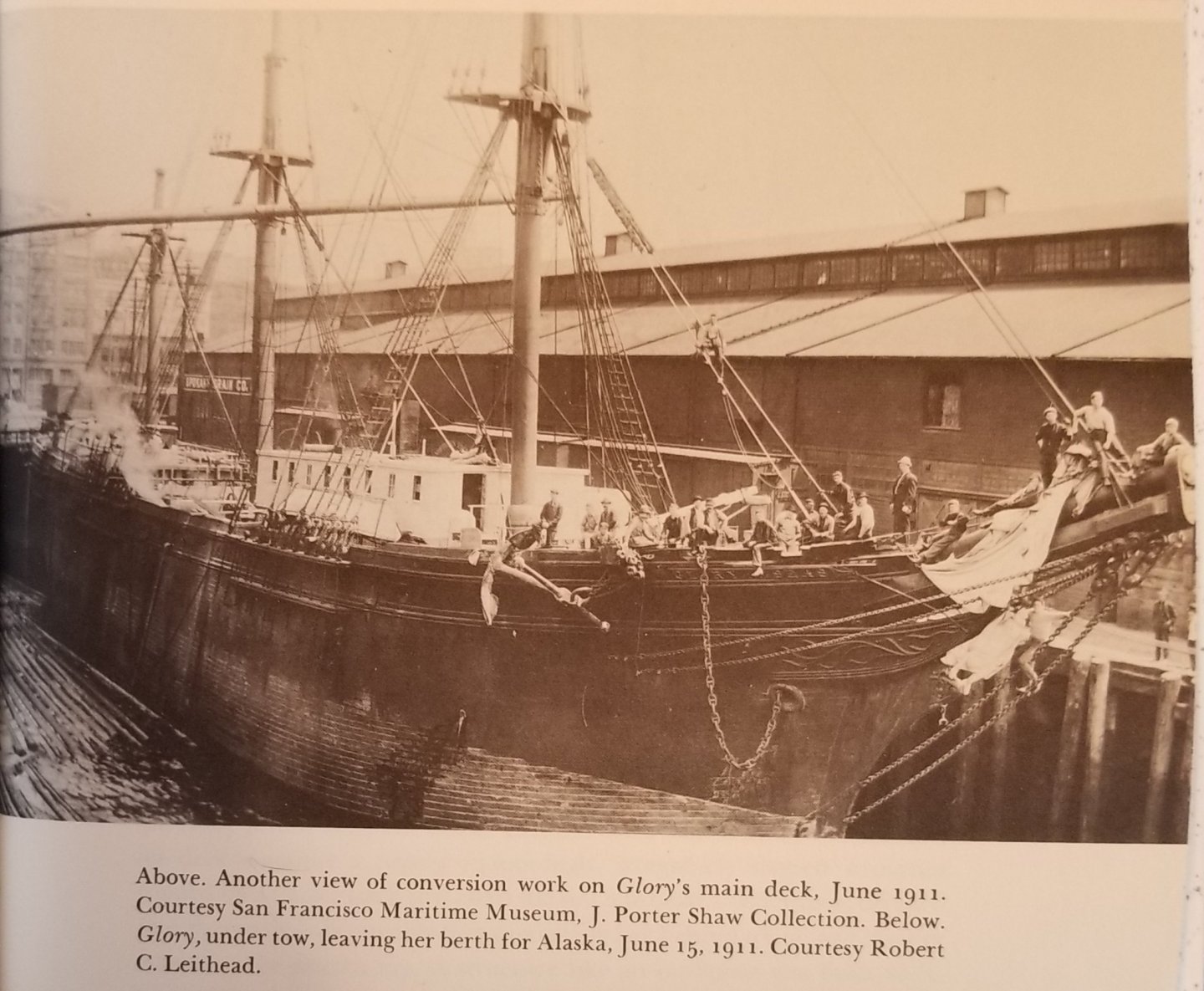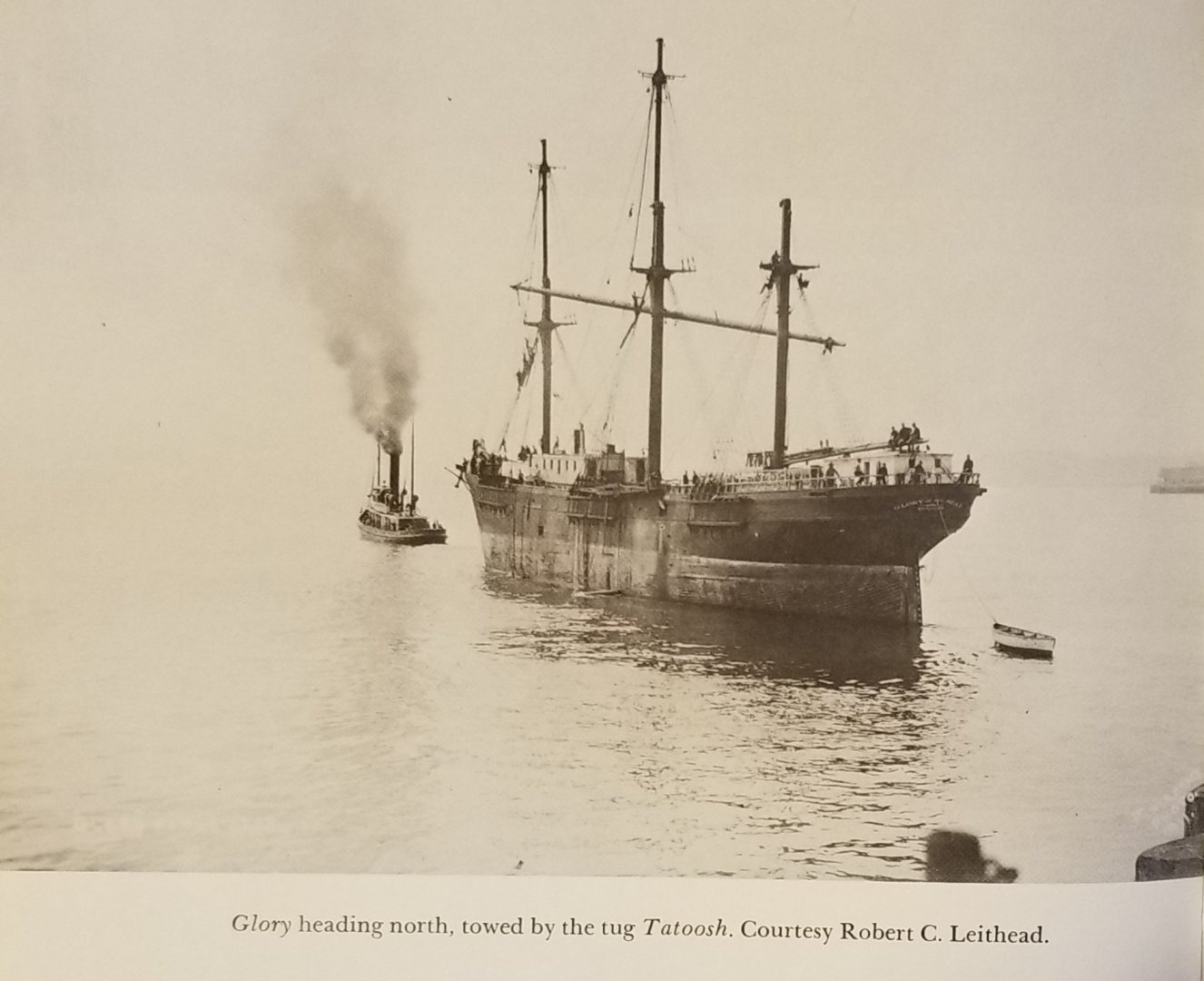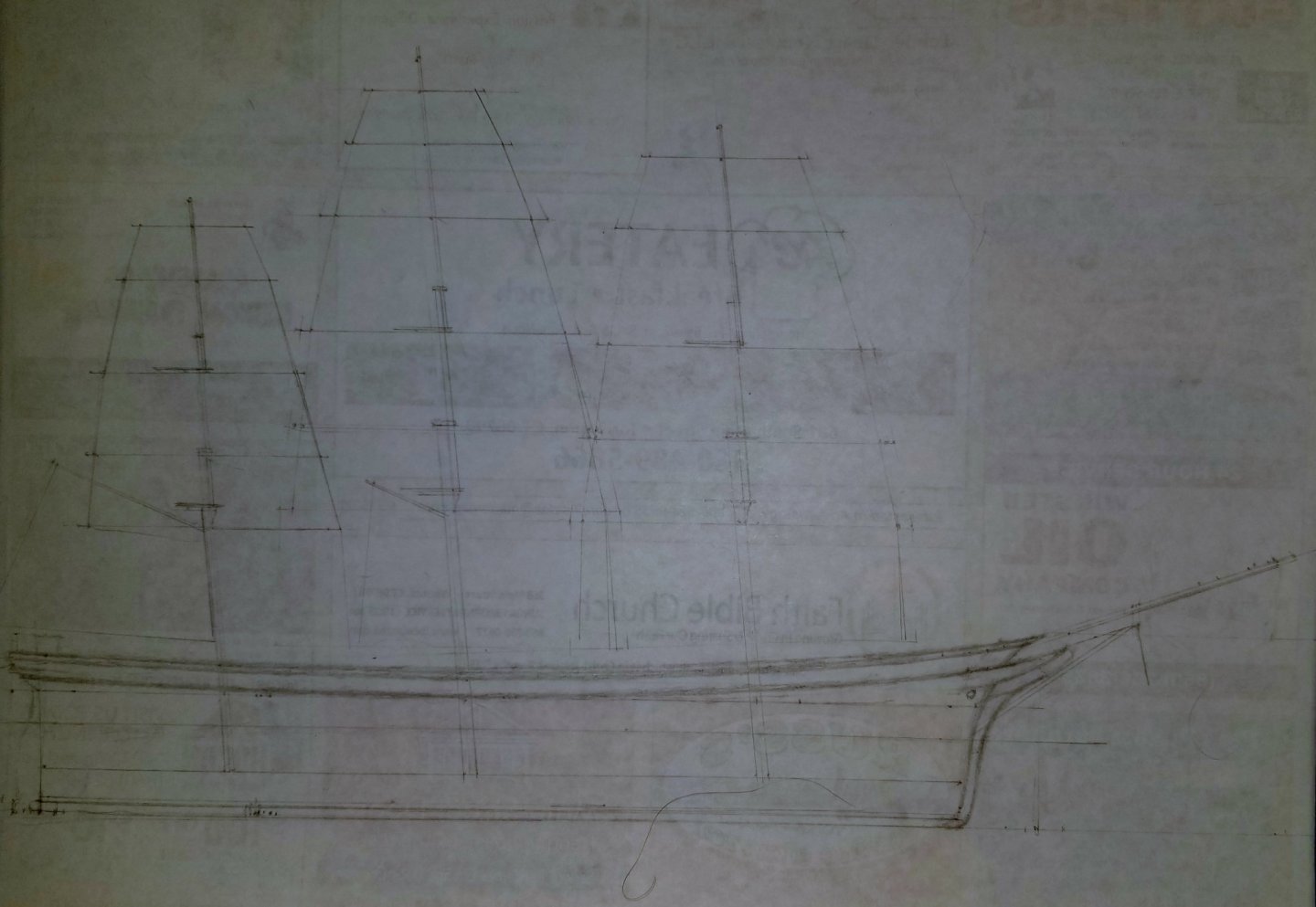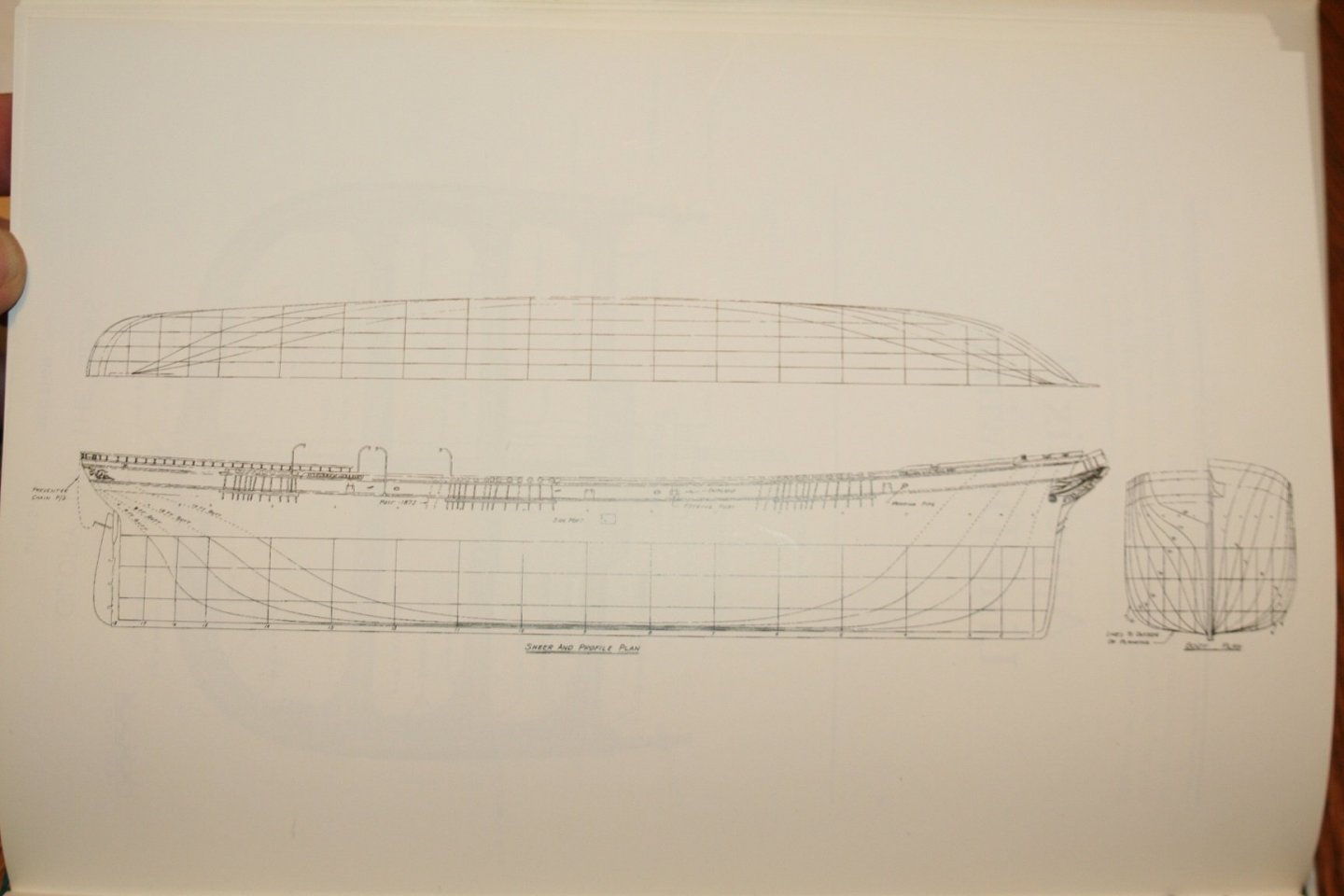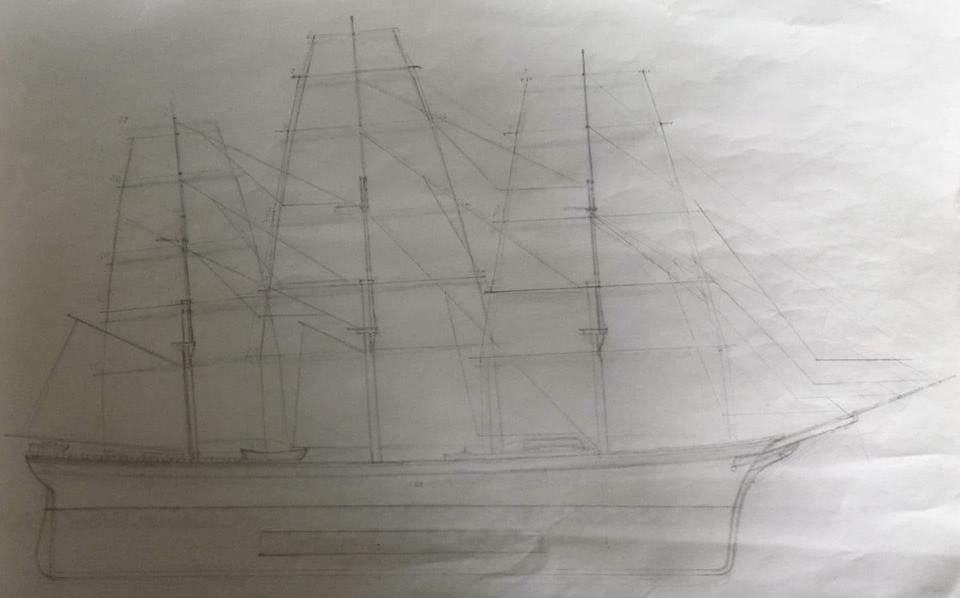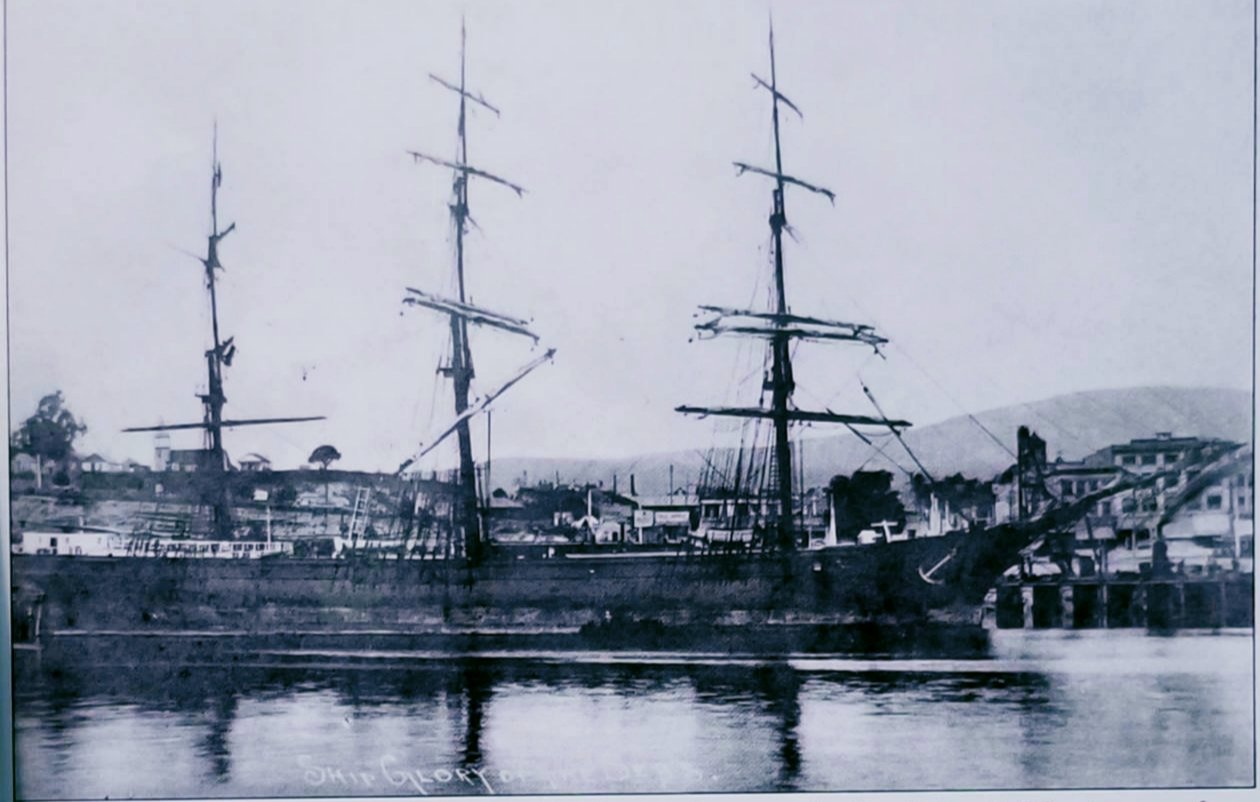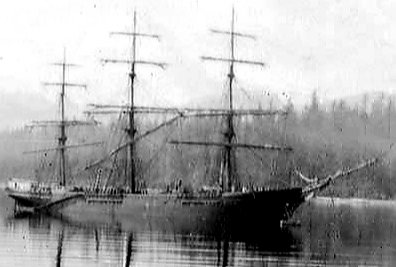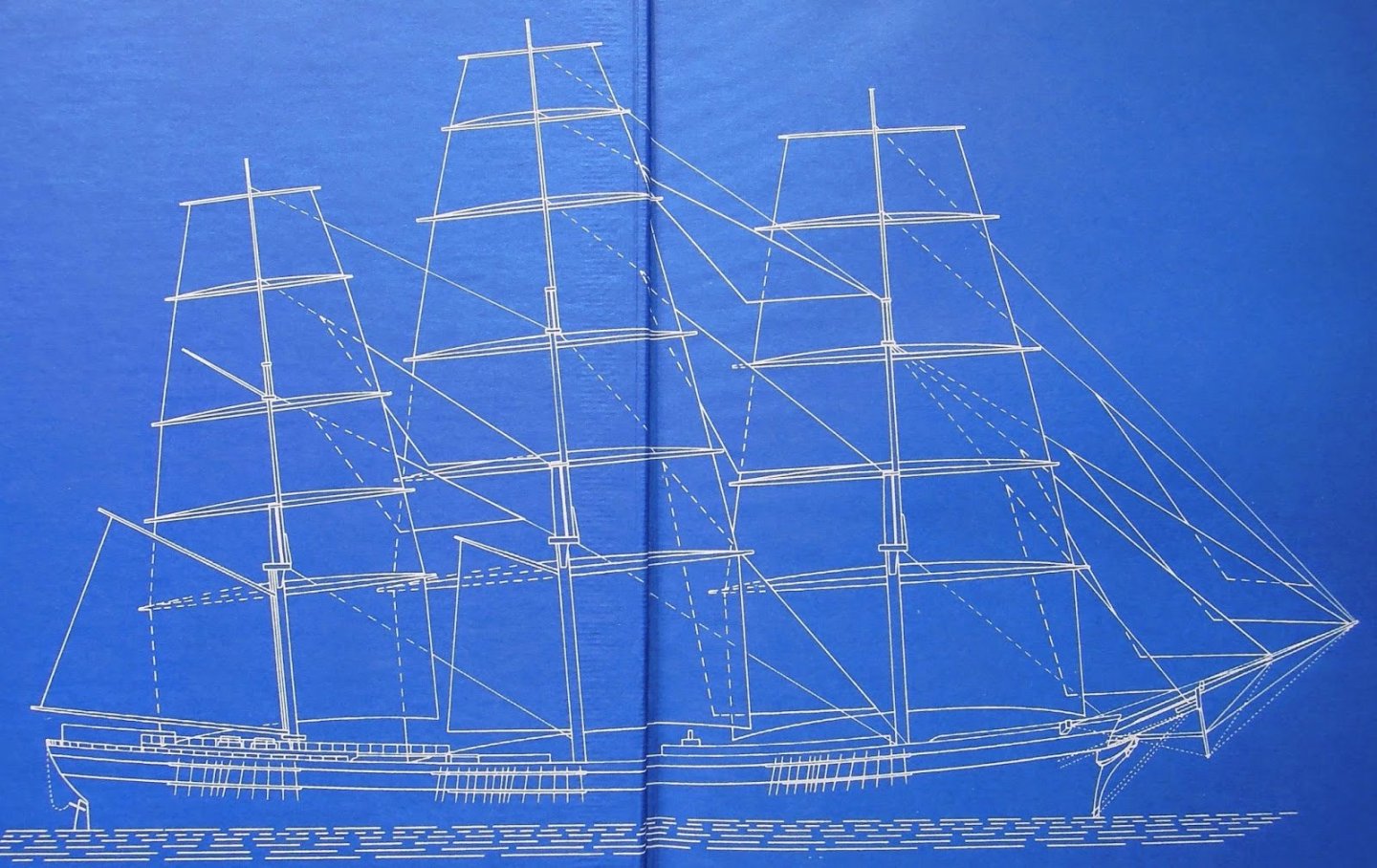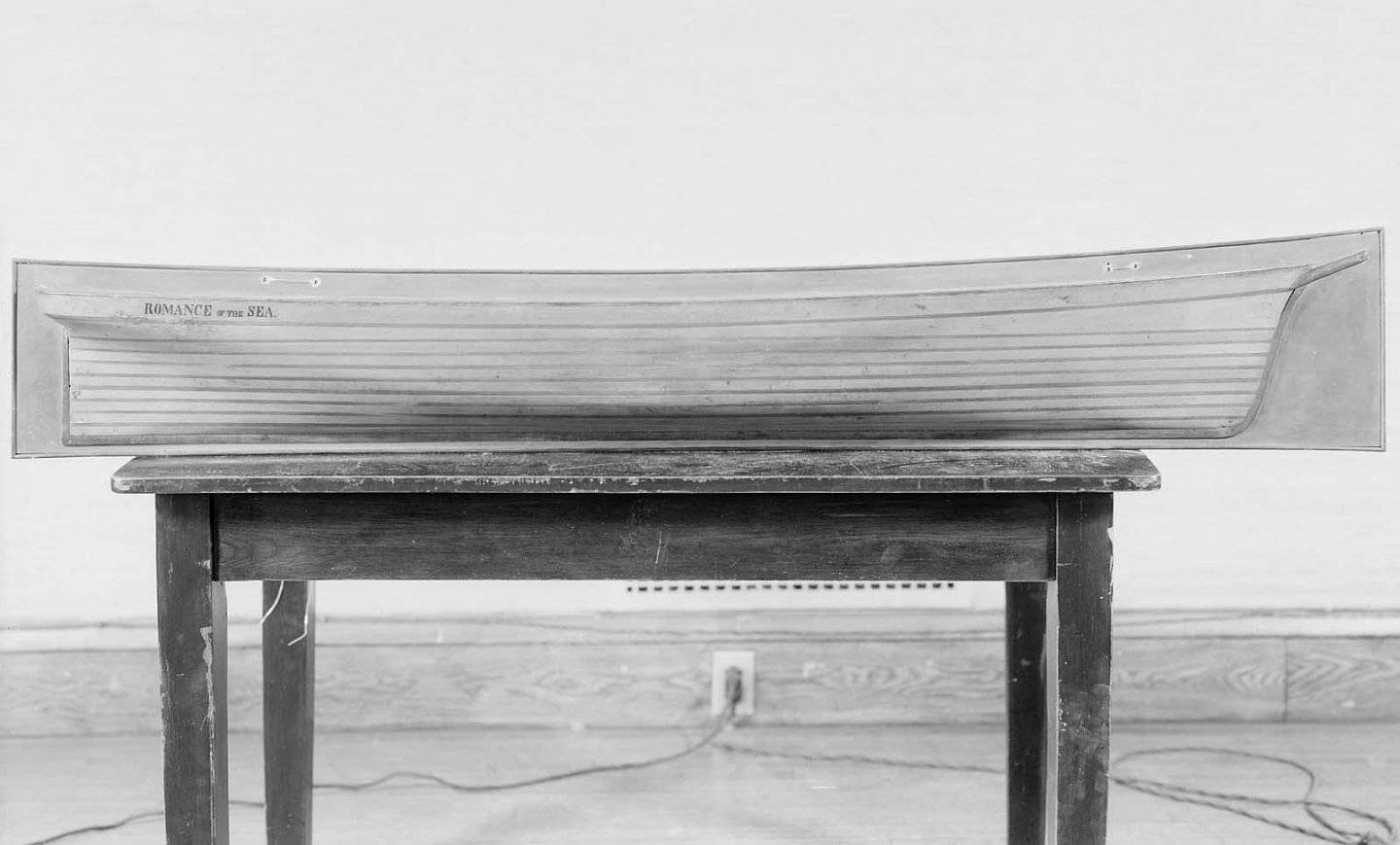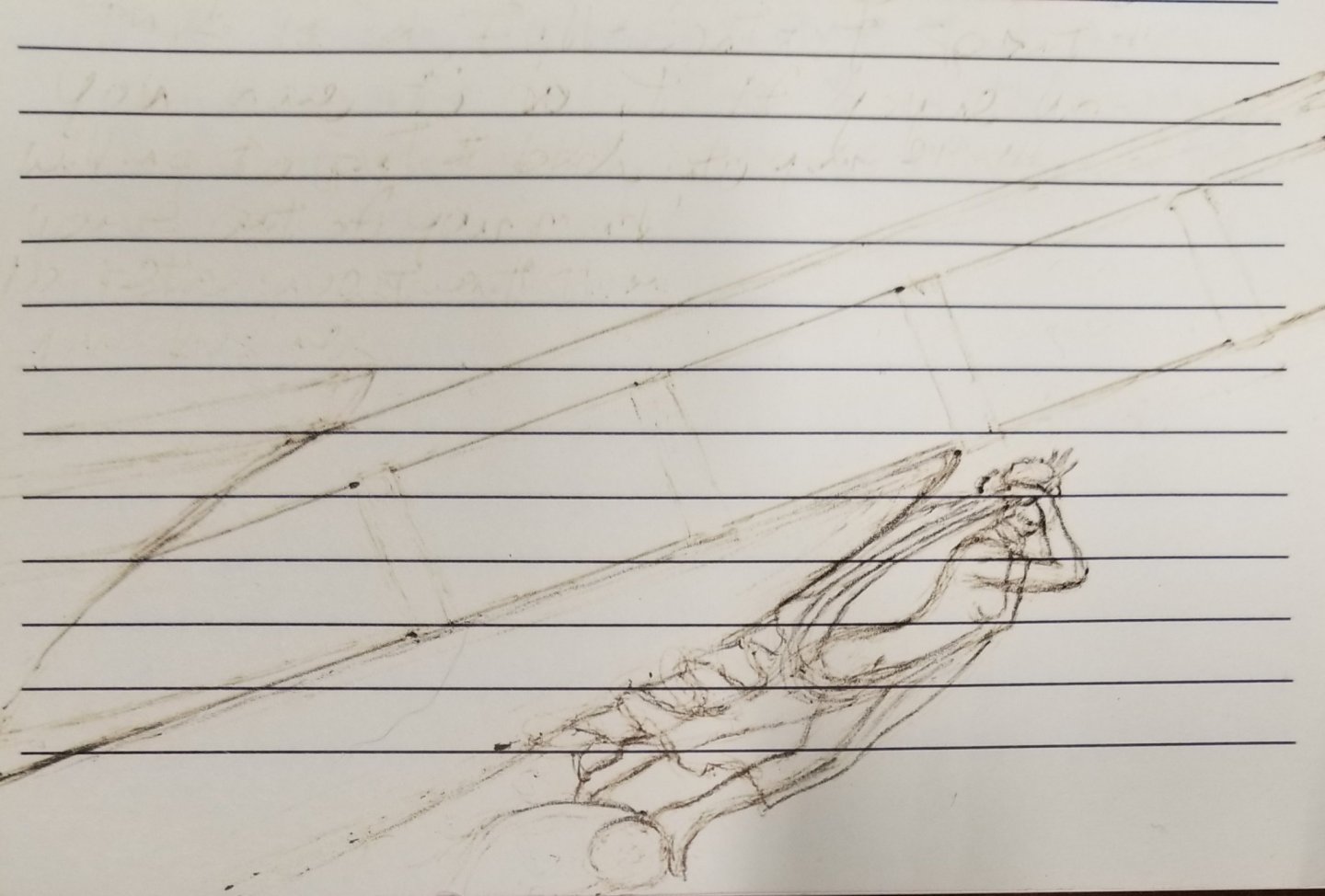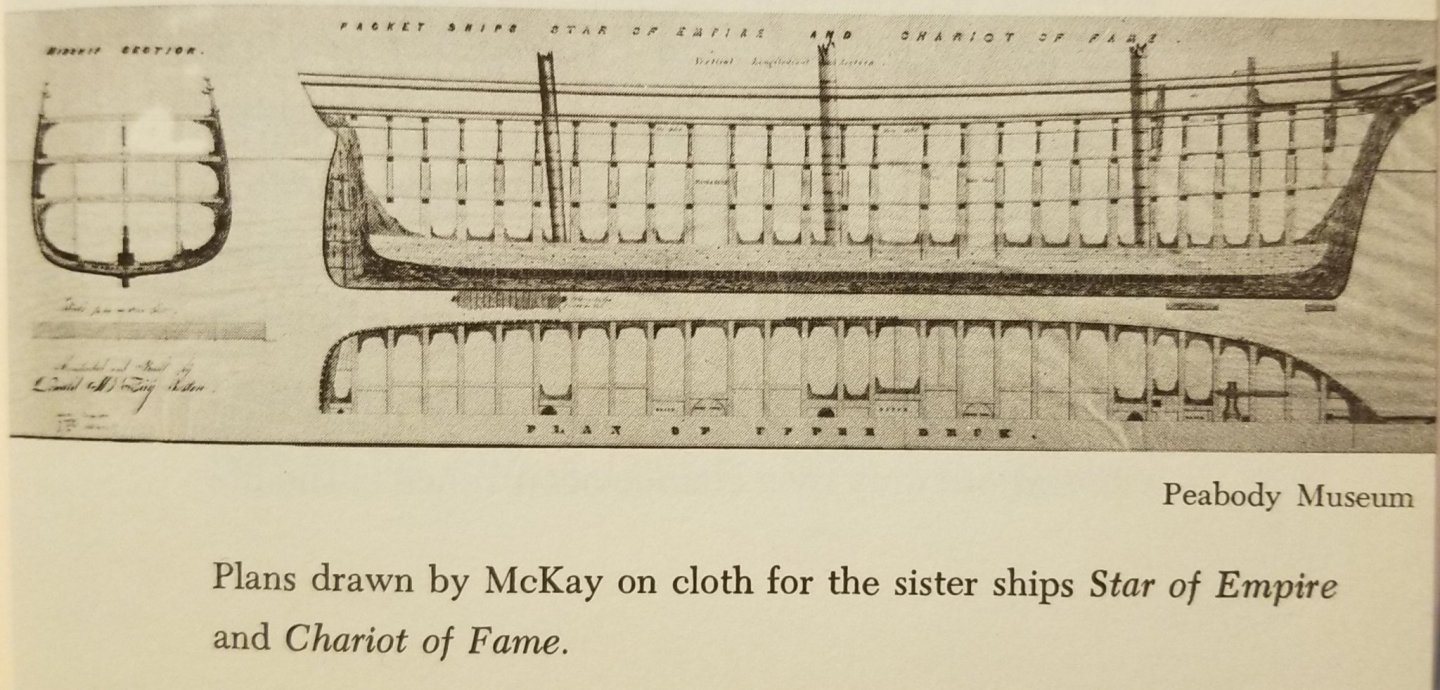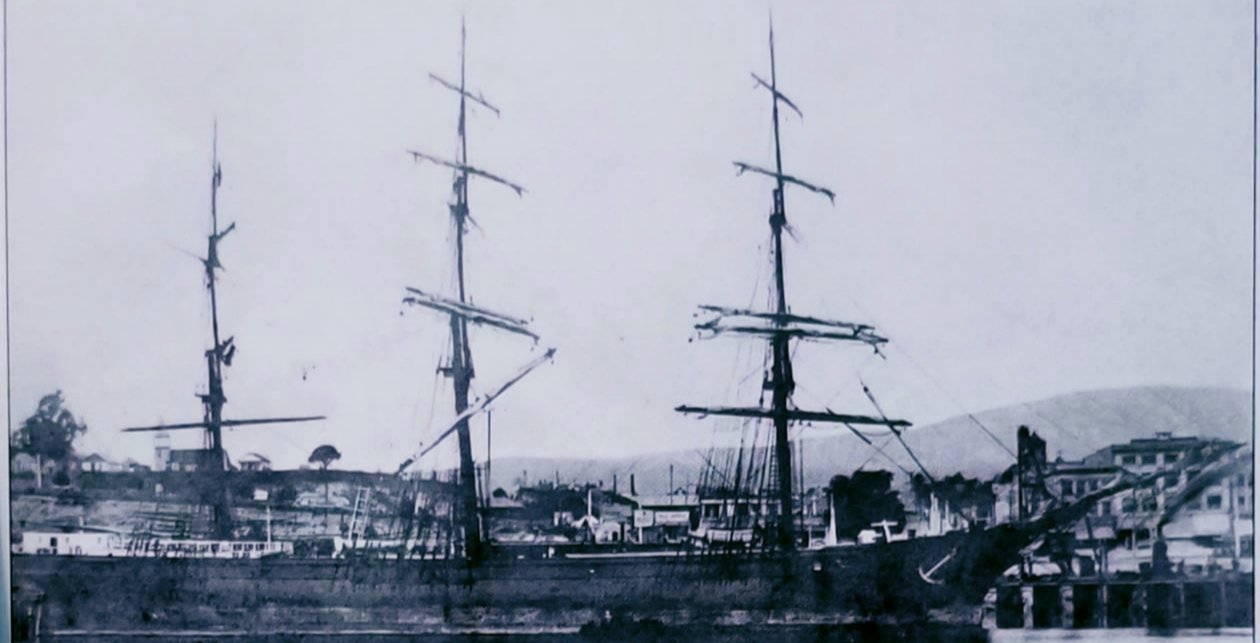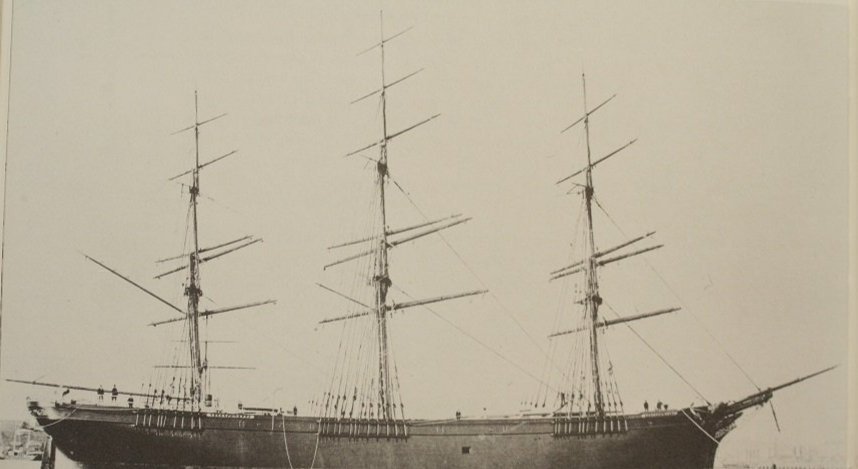-
Posts
2,152 -
Joined
-
Last visited
Content Type
Profiles
Forums
Gallery
Events
Everything posted by ClipperFan
-
Glory's underwater Hull where the Stem joins the Keel looked a little dumpy and nothing like the sharp, crisp line clearly visible in her 1869 PEM launch. I've reworked that area to match that section more closely. Next step will be to get a more accurate reproduction at 1/2 the ultimate scale Rob intends to build her at. Each time I intend to refine her so that we can reproduce this vessel in her ultimate glory.
- 3,560 replies
-
- clipper
- hull model
-
(and 2 more)
Tagged with:
-
In pursuit of improving Glory's hull, I've decided to do a 1/2 scale of your ultimate full scale replica. After working at 1mm=1', doing 19mm=1' will feel expansive indeed. I will concentrate on the hull to be sure she really captures Glory's full beauty.
- 3,560 replies
-
- clipper
- hull model
-
(and 2 more)
Tagged with:
-
Rob, thanks for your compliments on my Clipper Flying Cloud sketch. I built Revell's Flying Cloud as a youth and loved her lofty sail plan, which always impressed me as being so beautiful. Even as a kid, it puzzled me how her winged angel figurehead wouldn't fall off, since it was just sort of tacked on. Now I realize that all published images of McKay's Clippers (Except Great Republic, which had indepth illustrations of her) only show the Stem. For some reason, the entire advanced structures of Cutwater, Carved Arches and Naval Hoods have all been excluded. Interesting.
- 3,560 replies
-
- clipper
- hull model
-
(and 2 more)
Tagged with:
-
As discussed, I reworked Glory's bow, shortening her prow substantially, while angling her figurehead to more accurately reflect the 1907 image. Her Goddess Athene remains 90", the arch supporting her is now between 8 - 9 feet. Her Chainlink Bobstays now mount much higher above her waterline, reflecting her 1869 PEM launch image. This appears to approach the Bow more accurately but the beauty of her prow still remains elusive. I think moving to a larger scale might make it easier to achieve. One other factor I noticed while looking at the waterline fade of the 1907 dockside image is the slight possibility of some "Hogging" occurring. There appears to me at least to be a reverse curve around the center of the vessel. It's a natural occurrence of wooden vessels. It's why their masts are constantly reduced in height, to lessen strain which leads to this phenomenon. Being 38 years old at the time of this photo, it wouldn't surprise me. It means that I need to attempt to incorporate the graceful continuous curve she reveals at her much earlier San Franciso Wharf image and the broadside of her fitting out.
- 3,560 replies
-
- clipper
- hull model
-
(and 2 more)
Tagged with:
-
Rob, 40" is 101.6 cm (centimeters & millimeters are more accurate, being smaller & broken into 10ths) 265' (Glory's length from knightheads to taffrail, translates into 3.83 cm to 1'. If I use 38 mm it results in a total length of 39.64". Let me know if that's close enough to meet your goals.
- 3,560 replies
-
- clipper
- hull model
-
(and 2 more)
Tagged with:
-
McKay Clipper "Flying Cloud" 1mm = 1' drawn to same scale as "Glory of the Seas" with all dimensions reproduced precisely as described in Duncan McLean's, Boston Daily Atlas description at her launch. Her Bow may actually be more accurate than Glory's as the carved arch is almost equal to her winged figurehead. I know our focus is on getting the most precise reproduction of Glory but I thought you'd appreciate this other work too. As I've said, due mainly to McKay's own slavish devotion to secrecy, no models yet exist that precisely duplicate his marvelous vessels. I believe you and I can finally correct that with our collaboration on "Glory of the Seas."
-
Rob, I appreciate your compliments and agree with you completely about the Bow. Glory's break is still a little too long. Goddess Athene is 90" publicized in a magazine article on figureheads. From her 1869 PEM launch picture, it's readily apparent the carved arch section is slightly longer, possibly 8 1/2 -9 feet. Naval Hoods extend to just above the anchor hole, what I believe you refer to as the Hawes Hole. They appear to be double in length to Athene, which would make them 15 feet. Her figurehead appears to have a less steep angle in photos than my sketch depicts, so she has to be angled up slightly, hoods need to be shortened and peak made a little thicker, which should correct the curve radius you describe. I made enlargements of her Bow and Broadside to facilitate getting these features as accurately as possible. There's just enough imagery available to reproduce her lovely sculptural work too, which I eventually intend to reproduce as well. Here's my work on McKay's most famous Clipper "Flying Cloud." Just like "Glory of the Seas" she had Naval Hoods and carved arches supporting an angel on the wing, with a trumpet. Again it appears like I have her beak a little too long too. To my knowledge though, not one model of this vessel depicts these devices, even though her very first image of her launch does.
-
Rob, what you describe as "cheek plates" are referred to as "naval hoods" by Duncan McLean in his earliest descriptions of McKay's Clippers. Possibly due to Donald McKay's notorious penchant for secrecy, the existence of these powerful devices have literally been lost to History, even though they're described in multiple articles of McKay's Clippers. Naval Hoods were bolted into each other as well as the Cutwater. The first portion of the Bowsprit would be securely lashed to these devices. The ship's figurehead would be attached to the underside of the Naval Hoods, mounted to the fancy gilded and carved Arch section of the Cutwater. McKay's Bows consisted of a Stem, Cutwater, Carved Arch and Naval Hoods. Yet none of these integral parts of McKay's Clippers are modeled in any Replicas. If you want to understand the lengths to which The Mechanic himself went to conceal these components, look at McKay's lines for the Bow of Clipper Lightning. The ships lines simply dissapeared. It's the oddest thing to see. They were so intrinsic to the McKay Bow that Mr McLean observed that the loss of her Cutwater wouldn't affect ship's integrity at all. It still amazes me how ham fisted current McKay Clipper models appear compared to what the originals looked like. All modelers reproduce is the Stem and then the Figurehead is clumsily tacked on with no visual means of support.
-
Yesterday I went to Staples and printed out a bunch of images of Glory of the Seas. A ledger sized print of Glory's hull from 1907 revealed a far more subtle sheer than contemporary descriptions of her led me to believe. She's supposed to have had a 7' sheer from Bow to Stern. Most of that difference is in her graduated Bow. Otherwise her side dimensions are far more modest. I am in the process of revising that and Glory is now much more reminiscent of a McKay Clipper. The Naval Hood (carved devices which mould into the bow, join together just below the Bowsprit and above her goddess figurehead have some perspective challenges to interpret. (If you want to get a good sense of this natural phenomenon, just view the Henry B Hyde's elegantly long and sleek broadside to the dramatic bow on view, they hardly look like the same vessel.) Viewed below, Glory's naval hoods appear to be about the same dimensions as the 5' depth of the main rail. Same with the close up scene of her figurehead from 1900. It's very hard to discern but if you look at the later broadside scene where she's being towed as a cannery ship in Alaska, those same naval hoods look to be much thinner. Almost half as wide. I suspect the sharp entrance angle of her Bow contributes to this distortion. My sketch still has these devices a little long. I have to shorten them to more precisely match Glory's bow. I just hate to erase the tiny Athene figurehead, as she's 7.5mm in length and I was pretty happy with how she turned out. As I raise the sides to more accurately capture her very subtle sheer, this should remedy the difference in Hull heights being discussed. Once I nail this down, I will enlarge this to the 40" you're planning to build her at. Incidentally if anyone's planning on building a Flying Cloud model, her bow has never been accurately captured either. I'm surprised to see it because the description of McKay's most famous Clipper is detailed and describes these same Naval Hoods as Glory obviously has. Even the famous launch shows these details as does her loading for New York. I have a 4' hull drawing that I've been working on for a while now.
-
The Main Mast location was too far towards the Stern, which gave the vessel a lopsided appearance. I reworked both Fore and Main Masts and realigned all Yards perpendicular to all 3 Masts. My apologies again for the very light appearance. As this is an ongoing process and I continually erase my mistakes, my sketching is done very lightly.
-
The work in progress continues. I corrected the Hull length in this reworked plan. Everything is as accurate as I can achieve using 1 mm=1 foot. The Keel is now 240'2", distance at Wales 250', from Knightheads to Taffrail 265', depth of Hold 28'6", Keel's depth 11'8" taken from dimensions given in 'Sovereign of the Seas', Goddess Athene Figurehead 7'6", Bowsprit Steeve 4" to 1', Bowsprit 24' outboard, Jibboom 16' with 5' end, Flying Jibboom 15' with 5' end (as described from Staghound). Rear Quarterdeck 60' with Steering House 8' high, Quarterdeck House 45' also 8' height, both surrounded by rails on turned sanchions. 6' man at base is to give a sense of scale. As a preliminary effort, this Hull feels somewhat more accurate. Sail Plan still needs improvement. I've noticed that it's easier to accomplish better accuracy with larger scale. Getting Glory's graceful sheer is proving to be quite a challenge. As I reexamine these multiple images, it's clear the "dashy rake" of her Bow is just a short portion of her Hull near her Knightheads. It's apparent in the posed picture at her conversion, where there's a good overview of her long deck. I'll try to get a more flat image then the one shared here
-
Guys, I'm in complete agreement. I think what's confusing is contemporary descriptions of the 5' Main Rail and 16" Monkey Rail. The writer states her Bulwarks were 6 1/2' but the working images make it appear the total height is closer to 7 feet. I think the writer is describing specs but leaving out the details like main rail bulwark being 6" and the Monkey Rail Cap being the same, that adds an additional foot, making those bulwarks 7 1/2 feet. I also think the uppermost skysail & royals are a little short too. Having 6 to 8 feet flag poles seems a bit excessive. Knowing that Glory's figurehead is 7 1/2' tall, which is documented fact, I can use her measurement to get a closer approximation to her true depth. The writer describes her as having a 28 1/2' Hold. All in all though, it seems like this is headed in the right direction now.
-
My apologies for the low level lighting, we have to get up early tomorrow. I will get a much better image tomorrow. This to me more accurately reflects the dramatic new information as seen in the latest photos. I'm still getting all the dimensions accurate, so this is still very much a work in progress. I was so excited by your last post that I felt something had to be shared.
-
My goal is to be as true to Donald McKay's original designs as humanly possible. Contemporary descriptions said McKay's Clippers were beautiful and impressive, as imposing as men of war ships, with graceful arching Clipper Bows more sharp than even Steam ships. When I enlarged the latest image and flipped it, I immediately recognized the "bold, dashy flair" of the Bow that also appears in the 1907 image. I'm now working on revising the Hull to incorporate this fascinating feature.
-
Perspective distortion is tough to shake. It took me months to figure out Glory's true appearance and I'm still catching slight inaccuracies. It's why I know for sure that, as professionally drafted as it is, the Hull form from Mjelde's book is wildly inaccurate and I wouldn't use it. The deck and structures look to be very detailed and correct. Now that additional broadside images are available, it's even more clear than before that Glory's Bow has a substantial "dashy rake" just like contemporary descriptions have written. Even the sketch I drew before doesn't have the bold 'flare up" that can be seen in the new photos that have been revealed. Here's the new one you shared, enlarged and enhanced. I flipped my sketch to correspond with the best hull image of 'Glory of the Seas' at San Pedro Dock in 1907. All 3 photos show this prominent rise to the Bow. While my sketch is more accurate than the blue 'endpaper' sail plan, it too needs to be revised to account for this latest information. I think you'll agree that when the photos are aligned, they in no way match the rather dull appearance of the purported Hull plan.
-
I might do it someday when I have more time. As a youth I built many plastic Sailing Ship models. Currently my career demands a lot of time and intense effort, leaving little time for greater endeavors. If you specify what scale you want to build Glory at, I will gladly create the most accurate blueprints for you. Believe it or not, for the past decade I've been concentrating on this process, slowly improving my comprehension of her construction. Michael Mjelde's first book has an incredibly detailed description of Glory's construction. It was that resource that was my primary guide for the large sketch that I did a few years ago.
-
Large original Builder's Half Hull of 1853 McKay Clipper 'Romance of the Sea' (12'' x 5" × 60") From the Museum of Fine Arts, Boston, George B Upton Hall. According to her description in The Boston Daily Atlas, her dimensions were 235' on deck, 20' depth of hold, 8' height of between decks with a sheer of 4' to 5'. Not depicted is her rudder, 16" 'monkey rail' which mounts just above 'main rail', her cutwater, carved arch, naval hoods or small female figurehead. Shadows at the bow hint of a cutwater but only the stem is actually depicted. One big challenge that Donald McKay has left those of us wanting to accurately recreate his vessels is his secrecy in depicting bows of his ships. There are sketches of his Clipper 'Lightning' which literally leave lines of the bow blank. In his time, Mr McKay was referred to as a Mechanic who carefully guarded his design secrets. Apparently naval hoods which can be seen just above the figurehead reinforced the cutwater allowing his vessels to batter their way through massive waves at The Horn. As a result of this, his most famous Clipper 'Flying Cloud' still doesn't have an accurate hull in any of the replicas I've seen. In the original Boston Daily Atlas description, her naval hoods and cutwater are described in detail. Contemporary illustrations of her launch and at the dock show these devices. Yet today, even the most spectacularly impressive models just tack on her winged angel figurehead awkwardly at the Bow with no obvious means of support. Since there are such great photos available of 'Glory of the Seas' which clearly show her graceful carved arch incorporated into her cutwater, with naval hoods extending from the bow and her lovely figurehead all working harmoniously, I believe she could be a "Rosetta Stone" to finally, accurately reconstruct McKays other famous Clippers.
-
Here's another illustration of the Goddess 'Athene' who's lovely form graced "Glory of the Seas". The angle of inclination of the Bowsprit (nautical term 'steeve') is precisely measured based on dimensions in Michael Mjelde's first book. There's a highly detailed contemporary description of "Glory" herself, which is most likely reprinted from a Boston Daily Atlas article. Those dimensions are what I used to create the sketch of her Hull and sailplan (Fore and Main Masts are accurate but the Mizzen appears a little tall).
-
These plans are from McKay's own hand, which were intended to be published in a book which sadly never came to pass. From Richard McKay's publication on Donald McKay's Clipper Ship, apparently there were dozens of similar illustrations, now all carefully kept in storage. These particular originals are available for much closer viewing on the Peabody Essex Museum, Salem, Mass (PEM Website). They show sister Clipper Bowed Packet Ships 'Star of Empire' & 'Chariot of Fame.' As these are both triple decked vessels and are near size to 'Glory of the Seas' they closely resemble her Hull.
-
A cropped 1907 Starboard broadside of Glory of the Seas allows comparison to the scene at her fitting out. Side by side, a dramatic difference in Hull forms is immediately noticeable. As I continue efforts to reproduce an exacting reconstruction of this beautiful vessel, this is the most reliable source unveiled so far. Later images of Glory's hull after she was converted to a Salmon processing plan, aren't as accurate. There were major modifications to her deck which make it far more difficult to see her original sleek Hull and graceful sheer.
-
By cropping the image of Glory of the Seas fitting out you can see how similar this looks to the purported hull as drawn by the naval architect for Mr Mjelde's books. Now that there are more broadside images available it's clear (at least to me) that the rendering is inspired mainly by this particular shot.
-
With all due respect to Michael Mjelde's two wonderful, engrossing books on Donald McKay's last Medium Clipper "Glory of the Seas" the Hull profile published in both is grossly inaccurate. It appears to be based mainly on a published image of her at her fitting out available in the late '70s when his first book was published. Later images now available reveal a much sharper "Clipper" bow. Glory's Goddess Athene figurehead is published as being 90" (7 1/2 feet). Observed at her launch, it's clear her figurehead projects about 15 feet from her prow, since the carved arch which she's mounted to is slightly larger than the figurehead herself. Artists familiar with "perspective distortion" recognize that objects appear totally different based upon a person's viewpoint. The picture of Glory's fitting out is closer to her starboard stern quarter, slightly below, probably taken from a launch on the water and it appears that Glory herself has a slight lean to port. This perspective distortion must be taken into consideration when trying to evaluate her true Hull appearance.
About us
Modelshipworld - Advancing Ship Modeling through Research
SSL Secured
Your security is important for us so this Website is SSL-Secured
NRG Mailing Address
Nautical Research Guild
237 South Lincoln Street
Westmont IL, 60559-1917
Model Ship World ® and the MSW logo are Registered Trademarks, and belong to the Nautical Research Guild (United States Patent and Trademark Office: No. 6,929,264 & No. 6,929,274, registered Dec. 20, 2022)
Helpful Links
About the NRG
If you enjoy building ship models that are historically accurate as well as beautiful, then The Nautical Research Guild (NRG) is just right for you.
The Guild is a non-profit educational organization whose mission is to “Advance Ship Modeling Through Research”. We provide support to our members in their efforts to raise the quality of their model ships.
The Nautical Research Guild has published our world-renowned quarterly magazine, The Nautical Research Journal, since 1955. The pages of the Journal are full of articles by accomplished ship modelers who show you how they create those exquisite details on their models, and by maritime historians who show you the correct details to build. The Journal is available in both print and digital editions. Go to the NRG web site (www.thenrg.org) to download a complimentary digital copy of the Journal. The NRG also publishes plan sets, books and compilations of back issues of the Journal and the former Ships in Scale and Model Ship Builder magazines.

